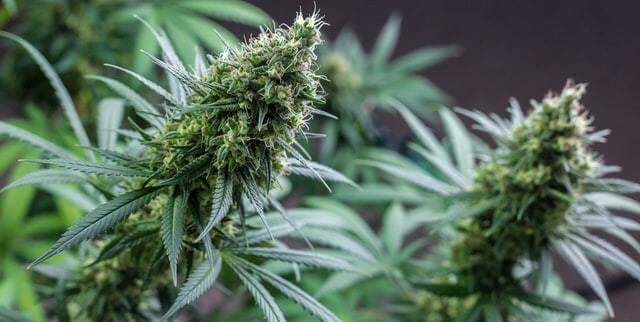Growing cannabis (and especially growing indoors) requires ongoing crop maintenance. Although cannabis flourishes in the wild, with ongoing care and specific pruning techniques, it's possible to harness the power of the plant for even more impressive yields indoors. Proactive maintenance reduces disease risk, focuses the plant's energy into cola production, and will ultimately produce more bud come harvest time.
If your end goal is to increase yield, there are two primary types of pruning you'll want to investigate: basic clean up and advanced pruning techniques. At the bare minimum, indoor growers should maintain ongoing basic clean up. Advanced pruning is ideal for growers working in small spaces, wanting even more significant returns, or just curious about the potential.
Basic Pruning for Cannabis 101
Left to its own devices, cannabis grows into dense, bushy and massive monsters. Even the most diminutive indica strain will produce far more vegetative leafy growth than is necessary or desirable within an indoor setting. At its core, basic pruning techniques for cannabis clean up the excess growth, remove dead or dying leaves, and improve air and light penetration into the canopy.
Let's review, why should you practice ongoing pruning?
- Clean up excess, unproductive growth
- Remove dead, dying, or damaged leaves
- Improve airflow through the lower areas
- Improve light penetration through the canopy.
By cleaning up excess growth and any damaged or yellowing areas, pruning helps redirect the plant's resources to the more productive areas. This work becomes incredibly valuable as you enter into the flowering stage. If you have maintained this proactive pruning process throughout the plant's life, its attention is even more focused on buds than it would be naturally.
Pruning begins at a very early age — after three weeks in the vegetative stage, it's time to begin. Every week, get into the habit of inspecting your plants and doing some ongoing clean up. Remove small lower leaves, damaged or yellowing areas, and any inward-facing undergrowth. Continue up until the second week of flower, when the plant stops growing.
Never remove more than a 3rd of the plant in one pruning session. The less you remove in a single session, the easier it is on the plant. Plan your ongoing weekly pruning sessions to align with the watering and feeding schedule, which will help your plants bounce back after the damage.
Advanced Pruning Techniques to Increase Yields
Basic crop maintenance isn't the only way to increase yields. Let's introduce some of the creative pruning methods cultivators use to convince cannabis to produce more buds.
Topping
Topping is the simplest pruning technique, which involves cutting the main stem early on in the plant's veg stage. Once your plants have produced four or five leaf nodes, use a sharp pair of scissors to cleanly cut off the newest shoot, just above the top node. This quick snip encourages the shoots sitting at either side of the main stem to become new-secondary stems. Topping the primary stem produces four secondary colas. It's possible to top several more times over the coming weeks, which further multiplies the colas. Keep in mind, the more you top, the smaller the buds. At some point, the returns are unfavourable.
Fimming
Fimming takes topping up a notch and is a slightly more technical method. Just like topping, it removes some of the newest growth to promote secondary shoots off the sides. But, instead of cleaning cutting just the stem, fimming (or the F@#& I Missed Technique) cuts the newest leaves and stem just above the latest nodes. Instead of pruning 100 percent of new growth, this cuts 80 percent. It leaves roughly ½ inch of the youngest leaves. Fimming promotes a wider plant, which is ideal for small grow spaces, and stealth grows. Again, you can fim several times to keep encouraging lateral growth.
Lollipopping
Lollipopping is perhaps the most extreme pruning technique on this list, but cultivators commonly practice it. The term refers to the plants' final appearance, which is long stems, with a lollipop of a bud sitting at the top. All the lower leaves and shoots have been removed, harnessing the power of the plant into bud production. Lollipopping happens during the vegetative stage and removes all lower growth, including any stems that will not reach the canopy level. Remove the bottom third of the foliage and unproductive lateral branches from the plant. Allow significant time for the plant to recover following this stressful technique.
Other yield-boosting techniques to check out which incorporate some aspects of pruning include Low-Stress Training, High-Stress Training, and Monster Cropping.
Proactive Pruning Improves Yields
Although cannabis is quite literally a weed, it's possible to work with that growth-potential. For example, cleaning up unproductive and damaged growth through the vegetative cycle not only improves bud development but reduces the risk of pests and disease. With the basic pruning mastered, incorporating more advanced techniques (which aren't really all that difficult) will deliver even more impressive returns.
The key to success is proactive maintenance. The more attention you give your plants every week, the healthier they will be, and the better the final harvest.





